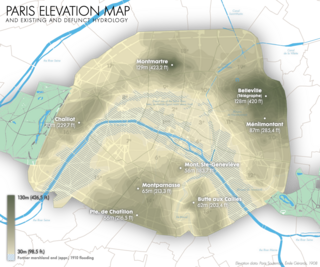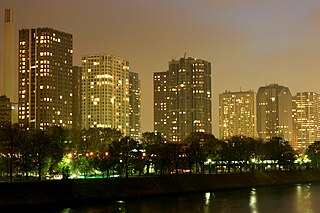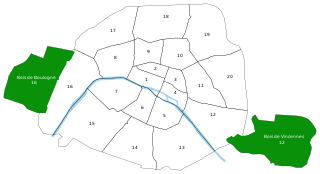 W
WThe Seine is a 775-kilometre-long (482 mi) river. Its drainage basin is in the Paris Basin covering most of northern France. It rises at Source-Seine, 30 kilometres (19 mi) northwest of Dijon in northeastern France in the Langres plateau, flowing through Paris and into the English Channel at Le Havre. It is navigable by ocean-going vessels as far as Rouen, 120 kilometres (75 mi) from the sea. Over 60 percent of its length, as far as Burgundy, is negotiable by large barges and most tour boats, and nearly its whole length is available for recreational boating; excursion boats offer sightseeing tours of the river banks in the capital city, Paris.
 W
WThe 1910 Great Flood of Paris was a catastrophe in which the Seine River, carrying winter rains from its tributaries, flooded the Paris conurbation, France. The Seine water level rose eight metres above the ordinary level.
 W
WIn late May and early June 2016 flooding began after several days of heavy rain in Europe, mostly Germany and France, but also Austria, Belgium, Romania, Moldova, Netherlands and the United Kingdom. Among others, the German states of Bavaria, Hesse, Rhineland-Palatinate, Baden-Württemberg, and North Rhine-Westphalia were affected. Beginning at the river Neckar, the Danube, Rhine, Seine and their tributaries were highly affected by high water and flooding along their banks. At least 21 people died in the floods.
 W
WFront de Seine is a development in the district of Beaugrenelle in Paris, France, located along the river Seine in the 15th arrondissement at the south of the Eiffel Tower. It is, with the 13th arrondissement, one of the few districts in the city of Paris containing highrise buildings, as most have been constructed outside the city.
 W
WThe Normandie built in 1835, was a French paddle steamer working in conjunction with her sister ship the Seine (1836) on the lower reaches of the Seine. The route she serviced was between Le Havre and Rouen via Honfleur with secondary stops along the way. She gained fame by being a participant in the retour des cendres of Napoleon to France.
 W
WThe Island of Platais, or Island of Médan, is an island of the River Seine in France 30 kilometers downstream from Paris. It is approximately 1.7 kilometers long and located in the Yvelines department between Villennes-sur-Seine and Médan on the left bank, and Triel-sur-Seine on the right bank. It is positioned downstream from the island of Hernière from which it is separated by a narrow channel. It is administratively shared between the municipalities of Villennes-sur-Seine, Médan and Triel-sur-Seine. The island is not connected to the river banks except by ferries.
 W
WThe Quai des Tuileries is a quay on the Right Bank of the River Seine in Paris, France, along the stretch close to where the Palais du Louvre and the Quai François Mitterrand is situated, in the 1st arrondissement.
 W
WThe Quai François Mitterrand is a quay by the River Seine in Paris, France, along the stretch where the Palais du Louvre is situated. Formerly Quai du Louvre, it was renamed Quai François Mitterrand after the former French president on October 26, 2003.
 W
WLa Rive Droite is most commonly associated with the river Seine in central Paris. Here the river flows roughly westwards, cutting the city into two: when facing downstream, the northern bank is to the right, and the southern bank is to the left.
 W
WThe Seine River was the scene of many early experiments with steam navigation. The steamship has a long ancestry, dating back at least to 1783 when the Marquis de Jouffray d'Abbans steamed his little boat, the Pyroscaphe, across the Seine. Robert Fulton even exhibited one to Napoleon's regime. With the success of the steam engine by the 1820s, the Second Republic embarked on a series of navigation improvements to raise weirs and locks with which to deepen the navigation channel. By the 1860s improvements had changed the riverbed from low-lying sand banks and trickle to a series of cascading ponds with a depth of 6 and a half feet.